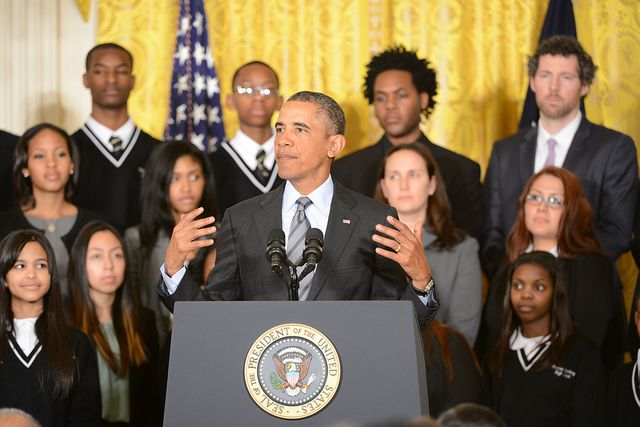President Obama launched his Promise Zones initiative last week, a project first announced during last year’s State of the Union address. The program, which pivots on the idea that poverty should be fought through holistic community-based approaches, will initially focus on five places — San Antonio, Philadelphia, Los Angeles, Southeastern Kentucky and the Choctaw Nation of Oklahoma — before expanding to 15 more in the next three years.
We’re here to answer all your burning questions about this shiny new development program.
What, exactly, is a Promise Zone?
In essence, it’s a place-based approach to fighting poverty. First introduced in Obama’s 2013 State of the Union address, the zones are high-poverty areas that, upon receiving their 10-year federal designation, will be eligible for various tax credits — if Congress can get it together and agree to approve them — designed to create jobs and encourage investment.
Additionally, the zones will receive aid in the form of coordinated federal assistance on social problems such as crime, recidivism and high dropout rates. Teams of federal employees from 10 different agencies will be deployed on the ground, assisting in maneuvering the byzantine rules of various federal programs and waivers. (And for all you recent liberal arts grads looking for work: Five AmeriCorps volunteers will be sent to each Promise Zone as support.)
How does a neighborhood qualify for a Promise Zone?
Each community has to have an overall poverty rate of at least 20 percent and one census tract with a poverty rate over 30 percent. You can’t say, “All of Chicago should be a Promise Zone,” either. The boundaries have to spread over more than one contiguous census tract and have between 10,000 and 200,000 residents. A Choice Neighborhoods or Promise Neighborhoods grant must be currently active within the zone.
Give me some concrete examples. What’s the deal with L.A.’s Promise Zone?
It comprises five neighborhoods in the city: Pico Union, Westlake, Koreatown, Hollywood and East Hollywood. One of this zone’s main pillars is to increase housing affordability through preservation of existing affordable housing stock. Community leaders will partner with developers to leverage private money and — here’s the key! — prevent displacement through building more affordable housing. They also intend to invest in more transit infrastructure and ramp up career and job training programs.
I read somewhere that robust job training programs are a good way to invest in the future, especially in cities. Will the other four Promise Zones focus on job training, too?
Yes. In West Philadelphia, for instance, the zone will not only implement skills training and adult education, but also classes for prospective small-business owners and entrepreneurs.
This is all great, but what about investment? How can this help spur at least some investment?
As I mentioned above, a big part of Promise Zones are the staff on hand to help sort through red tape. And those tax credits can go a long way toward making investment more viable. It’s not hard cash, so to speak, but it does spur investment. But there’s money, too: In West Philadelphia, loans will be made available for resident-owned businesses.
“Ultimately the federal money is only one small part of what brings us together,” Shaun Donovan, U.S. secretary of Housing and Urban Development, told reporters last week. “Just to give you an example, for every dollar that we’ve invested in our Choice Neighborhoods, we’ve seen eight other dollars come into those communities — private dollars, philanthropic dollars.”
I’ve heard that before. Any ideas on how much it will cost the federal government?
They haven’t put a hard number on it yet. But it will probably vary from city to city.
This sounds awesome. Why haven’t we done this in the past?
We have, sort of. As the Christian Science Monitor notes, the Promise Zones initiative has shades of presidential programs from, well, just about every president in recent memory: John F. Kennedy and Lyndon Johnson’s programs to boost distressed communities in the Appalachian region, George H.W. Bush’s enterprise zones, Clinton-era empowerment zones and, most recently, Obama’s National Revitalization Initiative.
Promise Zones are most similar to Clinton’s project, which doled out tax credits to underserved, low-income neighborhoods. The jury is still out on the success of these various programs, but it’s a calculated risk worth taking.
The Equity Factor is made possible with the support of the Surdna Foundation.

Bill Bradley is a writer and reporter living in Brooklyn. His work has appeared in Deadspin, GQ, and Vanity Fair, among others.




_920_518_600_350_80_s_c1.jpg)












